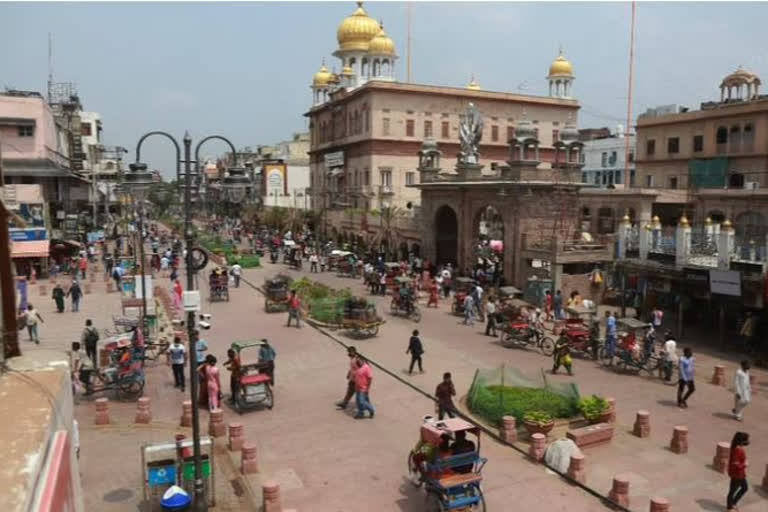New Delhi:As the country is all set to celebrate the completion of 75 glorious years of independence, there are some pages of history that seem to be fading out amid the newer socio-political complexities of contemporary India. Leaders who dedicate their entire lives to the freedom struggle have remained to be just a name in history for many, especially the younger generation. Thankfully, there are architectural remnants from our glorious history that still manage to hone the honour and pride of people who died saving our nation.
National capital Delhi houses many such architectural wonders that can take one right back to the olden days when history was being scripted. Chandni Chowk, a quintessential part of Delhi's aesthetic, also stores more history in it than one might expect. There are about 8 places in Chandni Chowk alone where the father of the nation Mahatma Gandhi held public meetings. All these eight places not only testify to the struggle for independence in the pages of history but have also managed to narrate history imperatively for generations to come.
As the nation gears up for the Amrit Mahotsav, here is a short trip to these glorious 8 places in Chandni Chowk:
1. Katra Khushal Rai
Braj Krishna Chandiwala, a resident of Katra Khushal Rai, Chandni Chowk, was one of the closest aides to Mahatma Gandhi during the freedom struggle. In the year 1924, when Mahatma Gandhi had observed a 21-day fast for communal harmony, Braj Krishna was living with Mahatma Gandhi and working as his associate. He used to arrange goat's milk for him, which was a major part of Gandhi's diet. Chandiwala was also with Gandhi on the day he was brutally murdered. Later, Braj Krishna Chandiwala wrote a book in outstanding three parts, named "Bapu's feet". In Katra Khushal Rai, Mahatma Gandhi also held several meetings during the days of the freedom struggle.
2. Kuncha Natwa
The memories of Mahatma Gandhi are also attached to the famous Kuncha Natwa in Chandni Chowk. In fact, during the days of the freedom struggle, Gandhi stayed at the residence of Pandit Lakshmi Narayan Gadodia at Kucha Natwa in 1929 on 19th February and 5th July.
3. Marwari Public Library
The Marwari Public Library is situated on this 1.3 km stretch of Chandni Chowk Main Market. It has not only been a witness to the freedom struggle of the country now but has also been a part of it. Marwari Public Library was established by freedom fighter Seth Kedarnath Goenka. In the year 1920, during the days of freedom struggle, Mahatma Gandhi held meetings in this library several times. Here he used to discuss important topics with Lokmanya Bal Gangadhar Tilak and Pandit Madan Mohan Malviya often.
